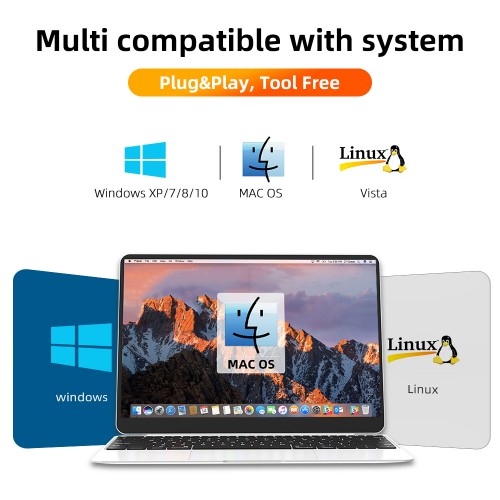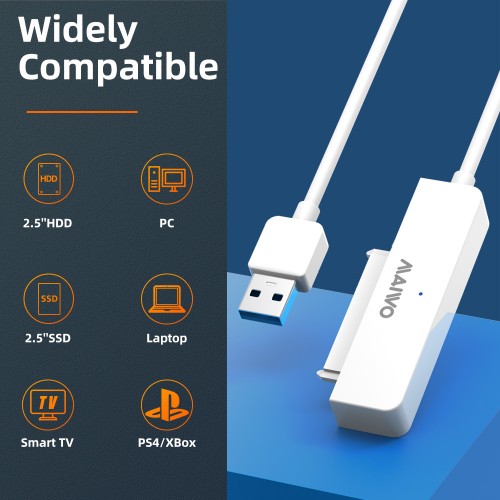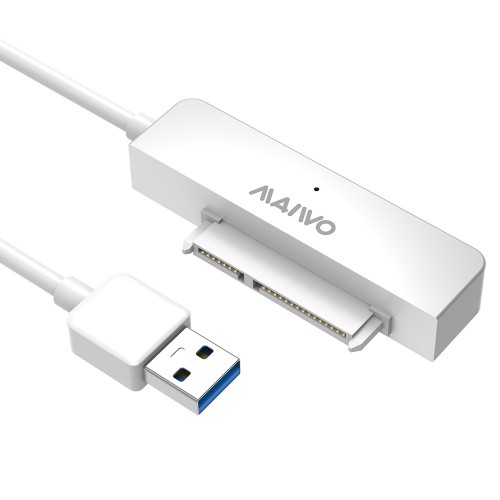In the world of data storage, there are many different solutions designed to meet the needs of users looking for convenience, speed, and capacity. Among these, two common options are hard disk enclosures and mobile hard disks. While they both provide external storage for computers and other devices, their designs, functionalities, and use cases differ significantly. Understanding these differences is key to choosing the right option for your data storage needs.
A hard disk enclosure (also known as an external hard drive case) is essentially a protective case that houses an internal hard drive (HDD) or solid-state drive (SSD). It allows you to use a standard internal hard drive as an external storage device by providing a USB, eSATA, or Thunderbolt interface that connects to your computer or other devices. Essentially, it transforms an internal drive into an external one. The enclosure typically consists of a durable outer casing made of plastic or metal, which protects the internal drive from physical damage. Inside, it features the necessary connectors and circuitry to interface with the drive, ensuring it can communicate with the computer over the chosen connection standard. These enclosures are widely available and come in various sizes to accommodate different types of drives, including 2.5-inch and 3.5-inch HDDs or SSDs.



A mobile hard disk, on the other hand, refers to an external hard drive that comes pre-assembled in a portable form, designed specifically for easy use without requiring any additional components like an enclosure. Mobile hard disks are self-contained units that combine both the storage device (HDD or SSD) and the external interface into one package. They are often ready to use out of the box, with no need for the user to install an internal drive or configure any settings. Mobile hard disks, commonly called portable hard drives, are usually compact, lightweight, and designed for on-the-go usage. They are often powered directly via the USB connection (in contrast to some external drives that require an additional power source). These devices offer easy plug-and-play functionality, making them extremely convenient for transferring and storing data across different computers and devices.
One of the most significant differences between the two lies in their design. A hard disk enclosure is essentially an empty case that requires an internal drive to be inserted into it. Users can select any compatible internal hard drive or SSD, place it inside the enclosure, and then connect it to their computer. The hard disk enclosure itself doesn't contain the actual storage medium; it is simply a case that enables an internal drive to function as an external one. In contrast, a mobile hard disk comes fully assembled. It is a self-contained external storage solution where the hard drive and the interface (such as USB or Thunderbolt) are already integrated into a single unit. The user does not need to worry about buying or installing an internal drive, making it a simpler and more convenient option for those who prefer a plug-and-play solution.
With a hard disk enclosure, users have the flexibility to choose the type of internal drive they want to use. This gives them control over factors like storage capacity, brand, performance, and price. For instance, someone could opt for a larger or faster SSD to increase the overall speed and performance of the external storage solution. Additionally, if the drive fails or becomes outdated, the user can simply swap out the internal drive without needing to replace the entire enclosure. On the other hand, a mobile hard disk comes with a pre-installed drive, which means users have less flexibility in terms of customization. Once you purchase a mobile hard disk, the drive inside it is fixed, and the only way to upgrade or change it is to replace the entire device. While mobile hard disks are available in a variety of sizes and capacities, you cannot select individual components like you can with an enclosure.
When it comes to ease of use, a mobile hard disk has a distinct advantage. These devices are designed to be as user-friendly as possible. Typically, all you need to do is connect the drive to a USB port (or another relevant port) on your computer, and it’s ready to go. There’s no need for installation or setup beyond connecting the cable. Most modern mobile hard disks are also plug-and-play, meaning they don’t require additional software to function. In contrast, while hard disk enclosures can be straightforward to use, they often require an extra step in terms of installation. Users need to first insert an internal drive into the enclosure, which might be a slightly more complicated task if the drive is large or the enclosure is difficult to open. Additionally, some enclosures may require drivers to be installed, especially when connecting to devices via specific interfaces like eSATA or Thunderbolt.
While both hard disk enclosures and mobile hard disks can be portable, the mobile hard disk is specifically designed for portability. Mobile hard disks are compact, lightweight, and often come with built-in shock protection to safeguard your data while traveling. The convenience of having a self-contained, ready-to-use unit is ideal for people who need to carry their data on the go. In contrast, hard disk enclosures may be slightly bulkier and require you to carry around both the enclosure and the internal drive separately. If you plan on frequently swapping out drives, this setup can become less convenient compared to a mobile hard disk that offers everything in a single unit.
Generally, hard disk enclosures tend to be more affordable than mobile hard disks, especially when you already own an internal drive that you wish to use externally. Since the user is essentially just buying a case, the overall cost of an enclosure is usually lower. In contrast, a mobile hard disk includes both the storage medium and the external interface, so it tends to be more expensive upfront. However, this cost comes with the added convenience of a pre-assembled and ready-to-use device.
A hard disk enclosure may require external power, particularly when using larger 3.5-inch hard drives. Some enclosures include a separate power adapter, while others may rely on a USB connection to provide power (especially with smaller 2.5-inch drives). Mobile hard disks, by contrast, are often powered through the same USB cable that connects them to your computer, which is more convenient for users who want to minimize the number of cables and adapters they need to carry.
Both hard disk enclosures and mobile hard disks serve the same fundamental purpose—providing external storage for data—but they differ significantly in design, flexibility, ease of use, and cost. A hard disk enclosure offers more customization and flexibility, allowing users to choose their own internal storage and swap drives easily, but it may require more effort in terms of setup and portability. On the other hand, a mobile hard disk is a simpler, more convenient option, ideal for users who want a ready-to-use, portable storage solution with minimal hassle.Ultimately, the choice between a hard disk enclosure and a mobile hard disk depends on the user’s needs. If you value flexibility, customization, and already have an internal drive, an enclosure might be the way to go. But if you prioritize ease of use, portability, and a one-stop solution, a mobile hard disk will likely serve you better